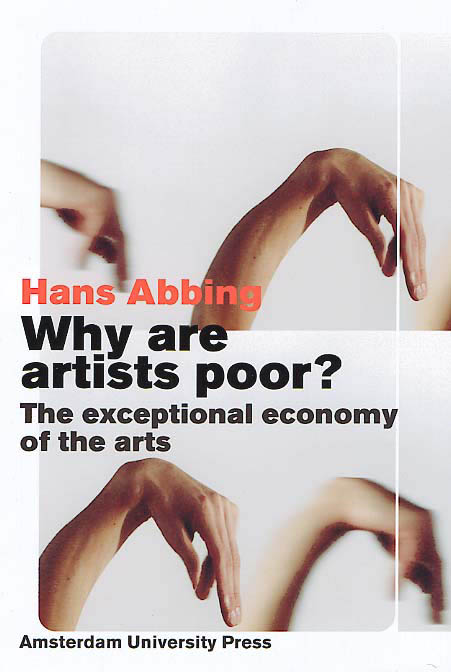Simon Morley (ed.): The Sublime (2010)
Filed under book | Tags: · aesthetics, art, art criticism, art history, avant-garde, painting, postmodern, sublime

“In the contemporary world, where technology, spectacle, and excess seem to eclipse nature, the individual, and society, what might be the characteristics of a contemporary sublime? If there is any consensus, it is in the idea that the sublime represents a testing of limits to the point at which fixities begin to fragment. This anthology examines how contemporary artists and theorists explore ideas of the sublime, in relation to the unpresentable, transcendence, terror, nature, technology, the uncanny, and altered states.
Providing a philosophical and cultural context for discourse around the sublime in recent art, the book surveys the diverse and sometimes conflicting interpretations of the term as it has evolved from the writings of Longinus, Burke, and Kant to present-day writers and artists. The sublime underlies the nobility of Classicism, the awe of Romantic nature, and the terror of the Gothic. In the last half-century, the sublime has haunted postwar abstraction, returned from the repression of theoretical formalism, and has become a key term in critical discussions of human otherness and posthuman realms of nature and technology.”
Artists surveyed include: Marina Abramović, Joseph Beuys, Tacita Dean, Walter De Maria, A K Dolven, Olafur Eliasson, Andreas Gursky, Jitka Hanzlová, Gary Hill, Susan Hiller, Shirazeh Houshiary, Anish Kapoor, Mike Kelley, Anselm Kiefer, Yves Klein, Richard Long, Barnett Newman, Tony Oursler, Cornelia Parker, Gerhard Richter, Doris Salcedo, Lorna Simpson, Hiroshi Sugimoto, Fred Tomaselli, James Turrell, Luc Tuymans, Bill Viola, Zhang Huan
Writers include: Marco Belpoliti, John Berger, Paul Crowther, Jacques Derrida, Okwui Enwezor, Jean Fisher, Barbara Claire Freeman, Jeremy Gilbert-Rolfe, Doreet LeVitte-Harten, Eleanor Heartney, Lynn M. Herbert, Luce Irigaray, Fredric Jameson, Lee Joon, Julia Kristeva, Jean-François Lyotard, Thomas McEvilley, Vijay Mishra, David Morgan, Jean-Luc Nancy, Jacques Rancière, Gene Ray, Robert Rosenblum, Philip Shaw, Marina Warner, Thomas Weiskel, Slavoj Žižek
Publisher Whitechapel Gallery, London, and MIT Press, 2010
Documents of Contemporary Art series
ISBN 0262513919, 9780262513913
237 pages
PDF (6 MB, no OCR, updated on 2020-5-25)
Comments (2)Hans Abbing: Why Are Artists Poor? The Exceptional Economy of the Arts (2002)
Filed under book | Tags: · aesthetics, art, art criticism, art history, economics, gift economy, market, money, netherlands

“Most artists earn very little. Nevertheless, there is no shortage of aspiring young artists. Do they give to the arts willingly or unknowingly? Governments and other institutions also give to the arts, to raise the low incomes. But their support is ineffective: subsidies only increase the artists’ poverty.
The economy of the arts is exceptional. Although the arts operate successfully in the marketplace, their natural affinity is with gift-giving, rather than with commercial exchange. People believe that artists are selflessly dedicated to art, that price does not reflect quality, and that the arts are free. But is it true?
This unconventional multidisciplinary analysis explains the exceptional economy of the arts. Insightful illustrations from the practice of a visual artist support the analysis.”
Publisher Amsterdam University Press, 2002
Open access
ISBN 9053565655, 9789053565650
367 pages
PDF (updated on 2019-12-12)
Comments (3)Claire Bishop (ed.): Participation (2006)
Filed under book | Tags: · aesthetics, art, art criticism, art history, art theory, audience, participation, politics, relational aesthetics

“The desire to move viewers out of the role of passive observers and into the role of producers is one of the hallmarks of twentieth-century art. This tendency can be found in practices and projects ranging from El Lissitzky’s exhibition designs to Allan Kaprow’s happenings, from minimalist objects to installation art. More recently, this kind of participatory art has gone so far as to encourage and produce new social relationships. Guy Debord’s celebrated argument that capitalism fragments the social bond has become the premise for much relational art seeking to challenge and provide alternatives to the discontents of contemporary life. This publication collects texts that place this artistic development in historical and theoretical context.
Participation begins with writings that provide a theoretical framework for relational art, with essays by Umberto Eco, Bertolt Brecht, Roland Barthes, Peter Bürger, Jen-Luc Nancy, Edoaurd Glissant, and Félix Guattari, as well as the first translation into English of Jacques Rancière’s influential “Problems and Transformations in Critical Art.” The book also includes central writings by such artists as Lygia Clark and Hélio Oiticica, Joseph Beuys, Augusto Boal, Felix Gonzalez-Torres, Thomas Hirschhorn, and Rirkrit Tiravanija. And it features recent critical and curatorial debates, with discussions by Lars Bang Larsen, Nicolas Bourriaud, Hal Foster, and Hans-Ulrich Obrist.”
Publisher Whitechapel, London, and MIT Press, 2006
Documents of Contemporary Art series
ISBN 0262524643, 9780262524643
207 pages
PDF (updated on 2017-6-19)
Academia.edu (added on 2015-5-6)

